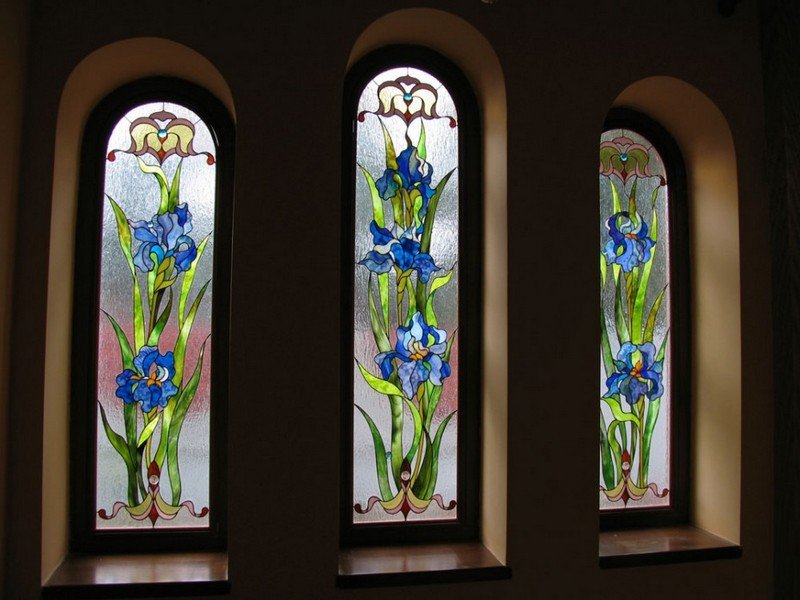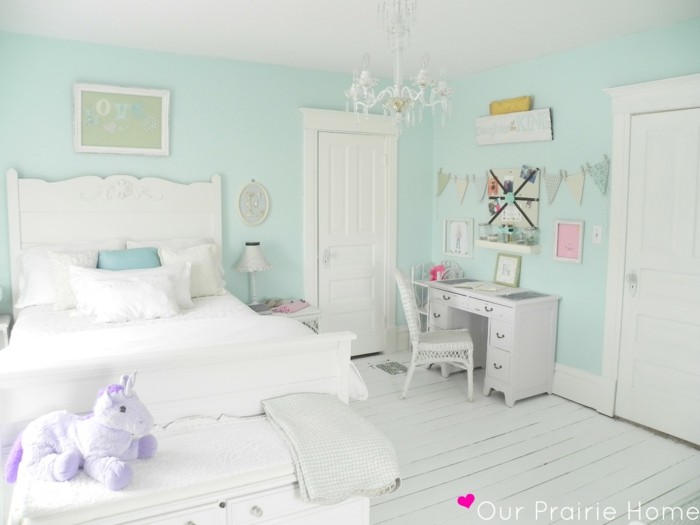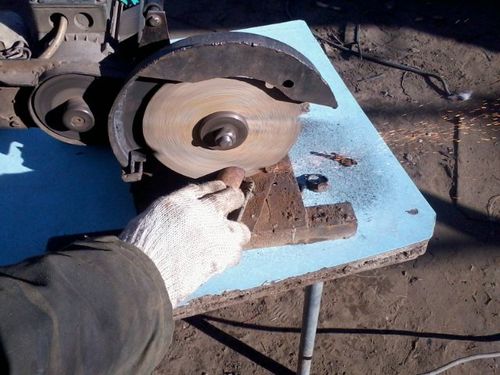Ornate patterns of rhinestones for interiors. Dressing with rhinestones. Variants of floral motifs with overlay shade
To create a cozy atmosphere in the apartment, the applied patterns on the ceiling will help using one of the existing techniques. Depending on the preferences of the owners of the premises, all kinds of combinations of colors and shapes are allowed. The main thing is to make a sketch to assess the harmony of the combination of colors. You can run it using computer technology.
The most common method is to use a stencil. In a specialized store you can buy a ready-made version. If one could not be found, then the situation will have to be taken into their own hands.
You can make a stencil with the required parameters in the design studio. In this case, you must specify the exact parameters and the desired image in advance.
1.jpg)
Another option for decorating the ceiling is PVC lighting. Its structure is easy to imagine on the example of a triple sandwich. Between the main and suspended ceilings mounted spot lighting system. The desired pattern is applied to the surface of the tension coating. There are no restrictions here. It is only necessary to correlate point sources of light and beautiful pictures.
For those who prefer more sophisticated designs, designers and builders offer the following options:
- The design of the figured type - provides for the use of drywall. In some models, the inclusion of PVC elements is found. It is strongly recommended that you start the correct marking before starting work, otherwise you will have to redo everything.
- A drywall option based on geometric shapes is one of the modern ways to decorate a room. To begin with, elements of a stretch ceiling are created on the basis of squares, triangles and circles. Use of other geometric shapes is allowed. The main thing is to make sure that there are holes for installing fixtures.
- A cheaper way is to use polystyrene foam.
Speaking about surfaces for applying patterns, designers focus on a common mistake. Often, buyers prefer beautiful, but not very useful coatings. As a result, it is simply impossible to apply a pattern - the surface does not support working with well-known image transfer techniques. Studying this kind of problem will help to study until the purchase of technical characteristics of the surface.
Tips: how to make a pattern on the ceiling with improvised means
You can create patterns on the ceiling using PVC lighting using a panel equipped with point light sources. Its size is at least 120x265 cm. The location of each light bulb directly depends on the selected pattern.
In order to minimize physical impact on the structure, the panel is protected by foam on both sides.

In extreme cases, the use of polyurethane is allowed. As a battery, a step-down transformer is used.
At this point, it is worth focusing on:
- The brightness level of the fixtures is selected so that the drawings do not fade against the background of intense lighting;
- Volumetric portrait or landscape of several parts requires the installation of side lighting points;
- A fuse is required;
- The device that regulates the brightness of the lighting in manual mode will help to do everything correctly.
Installation of drywall figured design involves a rigorous calculation of each parameter. It all starts with measuring the ceiling and profile. Only after repeated verification of the markings made, it is allowed to put patterns on the ceiling with your own hands.
We fix patterns for the ceiling with various characteristics
Beginners should remember that during the installation process drywall is fixed with a small margin. This is done so that you can then remove the curved shapes. In some cases, this requires bending the sheets.

If we talk about other options, the technology for their creation is as follows:
- The use of curly products based on drywall is recommended only if the person has sufficient experience. The picture is divided into several parts, folding like a mosaic. To avoid irregularities or inconsistencies, as it was said earlier, a sketch will help. During direct installation, a paper sketch is always in front of the eyes.
- Stencil - the easiest way to transfer the drawing to the surface. A spray gun or brush is used as an additional tool. The second is used in cases where you need to draw the smallest elements.
Regardless of the selected method of carrying the image to the surface, you should remember a simple rule.
After applying each coat of paint, let it dry. The duration of drying depends on the characteristics of the substance. At least it takes 10-15 minutes.
Otherwise, the drawings will be unnatural, due to partial mixing of colors.
We create drawings and patterns on the ceiling with curly parts
The main technology is colored vinyl installed in a niche in the structure of drywall. The surface is visually perceived as a complete image, but it creates the illusion of a mosaic.

The following recommendations will help to correctly assemble all the structural elements:
- Materials must be marked non-toxic;
- The joints of the elements must be insulated;
- Each part is fixed at least at 3 points.
Vinyl allows you to create color-rich images, but at the same time they require careful handling. If the room has an increased level of humidity or temperature changes, then a project of this kind should be abandoned. It is better to give preference to the idea of \u200b\u200bapplying patterns to the ceiling of PVC, which has a greater durability.
Beautiful patterns on the ceiling (video)
Whatever the pattern was ultimately chosen, this will become the highlight of the room and give an unusual flavor. Friends, family and ordinary guests will definitely appreciate such an experiment. The main thing is to choose a pattern with creative inspiration.
How to decorate bottles with rhinestones with your own hands.
Look at the pictures, real works of art, right? You can certainly find something like this in the store, but what will be the price! Meanwhile, to assemble such a product is completely affordable for any person, regardless of training. And the costs can be very small, especially in comparison with the amazing result.
As for the costs, it will be necessary to purchase rhinestones, artificial, plastic, glass or from semiprecious minerals, it is necessary to proceed from your financial capabilities and tasks, the size can be 4-5 mm. . For products in the photo, crystals of rock crystal were used.

The work of the master (craftswoman) Jamie Brock, a theme from the site http://hubpages.com/
Any bottles are suitable, but it is advisable to choose the basis of some kind of unusual shape. And it’s not necessary to focus only on wine or cognac, the basis can be really any! Packages of food, medicine, jugs, vases, you will not list all.
You will also need good glue, this is an important point in the work. Who will like to spend their time and eventually get the product crumbling into parts. Glue of the E6000, GOOP brand was used here, the name is not so important, the main thing is that it is suitable for gluing the selected materials and is not too quick-drying. It is advisable to choose a package of glue with a dispenser and a sharp nose in the lid.

Need a container, plate or flat plastic jar for rhinestones and a wooden stick with a slightly pointed end.
Sticking rhinestones.

1. We start work from the bottom, for this we apply glue with a thin line on one side of the bottle just above the bottom. The glue is applied with a thin line, it should be neither too much nor too little.

Next, we take a wooden stick and wet the sharp end in glue. There should be very little glue at the end of the stick, just to make it slightly sticky. Now, with the sticky end of the stick, we catch one strass from the can and transfer it to the line of glue already on the bottle itself, gently press and remove the stick. Here is an important point, the stickiness of the glue on the bottle should be stronger than on a stick.

2. Rhinestones are more convenient to keep next to the bottle, in a flat shallow container. Take the sticky end of the stick of rhinestones one after another and place them in a row on the line of glue. It is advisable to stick them closely, without spaces. If you have correctly decided on the amount of glue on the stick, the rhinestones will remain on the bottle, not on the stick.

3. Turn the bottle to the other side and apply a line of glue as well. After gluing the first row of parts, repeat the whole procedure with gluing the second row around the entire bottle. Remember, glue will be elastic for some time and it will be possible to correct unsuccessfully applied parts. If the bottle is square, with roundings, use the smallest rhinestones on the corners, not more than 4-5 mm. Large fragments are best used on a flat surface.

4. We continue the work passing around the bottle a row next to the very top. If in the future you will use the product only as a decorative element, then we glue the neck and neck with rhinestones.

In the event that the bottle or vase has a lid, then we also decorate it with rhinestones, this will be a wonderful finishing touch. After work, allow the glue to dry completely for at least 24 hours.

Tips and additions.
- Another way to apply glue is to spot, a small drop for only one fragment.
- If you want to change the color of the bottle itself, then you need to pour a little paint inside, chat, spread over the entire surface, pour the residue and let the paint dry. By changing the background of the base, you can achieve a completely original play of color.
- Try to choose rhinestones with taste. For example, as in the photo, fragments from rock crystal, however this is far from the only option.
- You can cover with rhinestones and hard plastic dishes, and a metal base.
- Of rhinestones, patterns can be made using parts of different sizes, shapes and colors.
Artificial rhinestones often have one feature, the larger they are, the more fake they look. Smaller sizes in the game of color are closer to natural. Moreover, as they say, science does not stand still. Now they are creating such artificial crystals that only specialists can distinguish from natural ones. For example, Swarovski, great quality for less.
DIY rhinestone applications are very popular among young people today. They are an excellent decorative element of clothing and perfectly complement your everyday or weekend outfit. You can make applications with your own hands, or you can buy ready-made applications for clothes in sewing or online stores.
All sorts of options
One has only to enter in the search engine a request for applications from rhinestones, as you can immediately see a lot of photos with various options for such products. From there, you can draw ideas for DIY crafts.
Here you can find applications from rhinestones in the form of a cat, and in the form of celestial bodies, and in the form of plants and flowers, as well as all kinds of animals and birds, there are a lot of options. And you can show imagination and come up with your own drawing or ornament.




Diagrams of attaching rhinestones to clothes are widespread both on the Internet and in special literature, which can be found in hobby stores or in sewing stores. Also templates and stencils can be downloaded or drawn by yourself.
The easiest way to choose rhinestones is to take those that will be enough to place on the necessary fabric and stick with an iron. It is very easy to work with such rhinestones, they look beautiful and last long.
Also, the time to wear a rhinestone on clothes depends on the choice of material. It will depend on the fabric that you choose to decorate with rhinestones, how many rhinestones will be held on it.

Create your own application
Here is a list of what we need for appliqué from rhinestones on clothes:
- Rhinestones themselves. Their number and colors will depend on which pattern you choose;
- Pencil for rhinestones. It is sold at sewing stores or hobby stores. You can also use a regular pencil with a soft stylus or eyeliner;
- Thermal film;
- Drawing. This can be a printed or hand-drawn pattern or diagram according to which you will transfer this pattern to the fabric;
- Iron;
- You may also need a tool such as a thermal applicator, we’ll talk about its benefits a little later.
Related article: Plaster Bandage Easter Eggs
When the material and rhinestones are selected, you can begin to work.
First of all, we need a template for the future pattern of rhinestones. This template must be carefully transferred to the thermal film, preferably with a marker, which is then easily wiped off with alcohol or nail polish remover, that is, not permanent.


Now we fix the film and begin to spread the rhinestones. You can use tweezers as an auxiliary tool to, in case of which, turn or move the rhinestones in their places.


Hands can stick to the film, so to avoid this, you can partially unstick the substrate from the thermal film and lay out the rhinestones like this.

Rhinestones must be hooked to the side that will be glued to clothing, the so-called glue side.

After the drawing is laid out on the film, we need to prepare the fabric. To do this, it must be degreased. Then we tear off the substrate and apply a film with a pattern to the fabric, cover with a sheet of paper. The iron must be put into cotton mode, it is important that there is no steam. You need to iron it literally within 15-20 seconds, since metal rhinestones heat up very quickly. We warm up the whole picture completely, after which we allow the rhinestones to cool a little. And only after that, carefully, without sudden movements, remove the film.
The pattern lined with rhinestones is firmly glued to your clothes and will undoubtedly last you a long time. Wear it with pleasure, as well as decorate other elements of your wardrobe, because the clothes that you decorated with your own hands are always exclusive, which means you are at the height of fashion!
If you want to lay rhinestones on a fabric that is better not to iron, so as not to spoil, you can use the thermal applicator. It is convenient in the case when you do not want to waste thermal film, but only need to correct the picture or make some small element, and the thermal applicator is indispensable in those situations where rhinestones need to be glued to places where it would be difficult to reach with an iron.




























